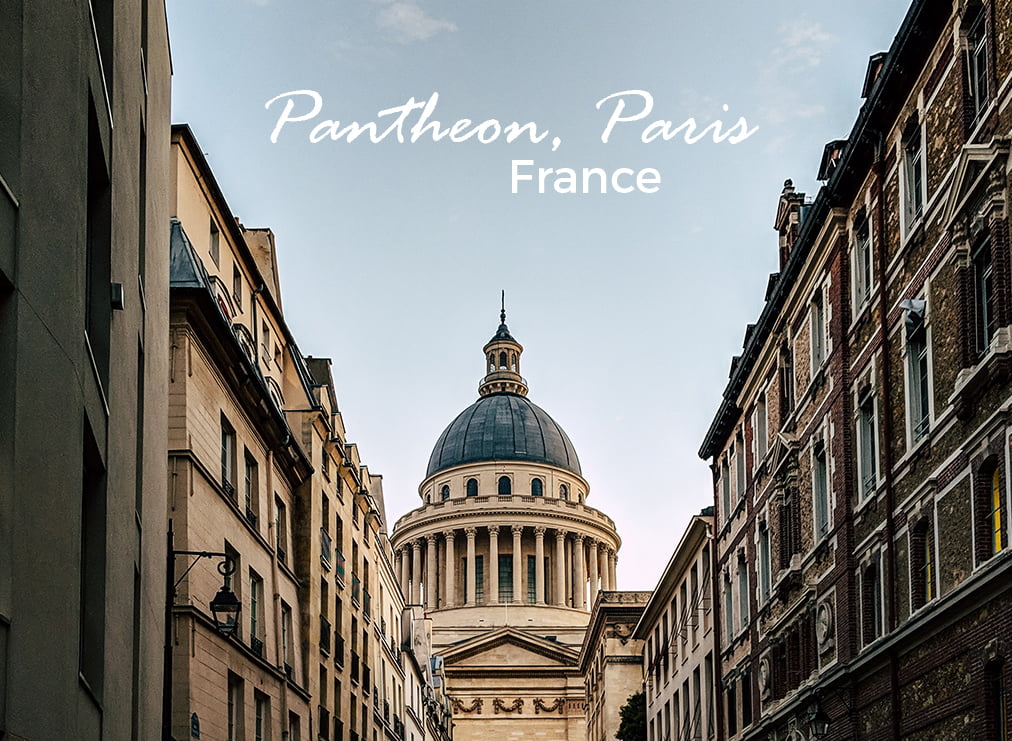
It’s hard to find someone who doesn’t fancy of visiting Paris. After all, the city is blessed with numerous iconic scenes and remarkable spots. From the spectacular Eiffel Tower, to the gothic Notre Dame, to more, there comes a list of must-visit sites that make the city among the most adored places in the world.
The Pantheon, in particular, comes as one of the city’s main attractions. Located in the Latin Quarter of Paris, the place boasts of its architecture and history. With its impressive design and the role it played in the past, it’s no surprise that culture vultures, history buffs, and art enthusiasts find interest in the structure.
If you’re considering of visiting Paris soon, learning more about this remarkable building will help you enjoy your stay in the famed city even more. Here, we have prepared a brief guide on why the Pantheon carries a historical and cultural significance in Paris. Read on.

Patheon, Paris – Why Was it Built?
Recognized to be among the most impressive sites in Paris, the Patheon is a spectacular structure built about the year 1757 by the architect Jacques-Germain Soufflot.
Originally, the building was intended to serve as a church in honor of Saint Genevieve, the patron saint of Paris, who allegedly saved the city from the Huns.
To understand its inception, it’s best to look back to the year 507AD, which goes to hundreds of years before the actual Patheon was built. At the time, King Clovis, the originator of the French nation, converted to Christianity and decided to build a basilica. Later, in 512AD, the church became the burial ground for Saint Genevieve.
Years later, King Louis XV, the King of France in 1744, got seriously ill. At the time, he vowed that if he recovered, he would build a prestigious church to replace the ruined church of Sainte-Geneviève on the same spot where the original basilica was located.
Fortunately, against all expectations, the King recovered, granting him the nickname “Le Bien-Aime” or “The Well-Loved.” He attributed his recovery to the prayers of Saint Genevieve and decided to put his promise to reality. He then commissioned Jacques-Germain Soufflot, the chief architect under King Louis, to begin the construction of the Patheon.
What Happened? The Pantheon We Now Know Today
When the project was put to the hands of Jacques-Germain Soufflot, his plan was to build a building that will outshine even the Pantheon in Rome. With this in mind, he infused different architectural styles, combining Greek architecture with Gothic and more. The result was a remarkable testament of early Neoclassicism, marked by a Greek cross with an impressive portico of Corinthian columns.
However, even before he got the chance to finish the project, Soufflot died, and he was replaced by his architect pupil and associate Jean-Baptiste Rondelet, who completed the Patheon in 1790, right at the onset of the French Revolution.
When the revolutionaries won, they nationalized the building and turned it into a mausoleum for the nation’s great men. Since then, the Pantheon, which was originally constructed as a church, became a temple that houses the remains of the great intellectuals of France.
What to Expect in the Pantheon?
To date, the pantheon now serves as among the most majestic archeological sites in Paris. Combining neoclassical and Gothic architecture, the building also houses incredible frescoes, mosaics, and paintings depicting Saint Genevieve and scenes from French history and revolution.
Among the great men that had been laid thereinclude Francois-Marie Arouet de Voltaire, Jean-Jacques Rousseau, Jean-Paul Marat, Victor Hugo, Antoine de Saint-Exupery, and more.
To get inside the building, you’ll need to pay for a small entrance fee. You can also avail guided tours, ranging from individuals, group tours, self-guided tours to explore the site.

The Bottom Line
Have you learned something through our guide? We hope you did!
Surely, exploring Paris is a dream, and for many tourists, getting a chance to visit the Pantheon comes as a major part of their French tour.
Whether you’re a culture vulture, a history buff, an art enthusiast, or someone who merely loves to explore beautiful places, checking out Pantheon is sure to leave you breathless and in awe.
















